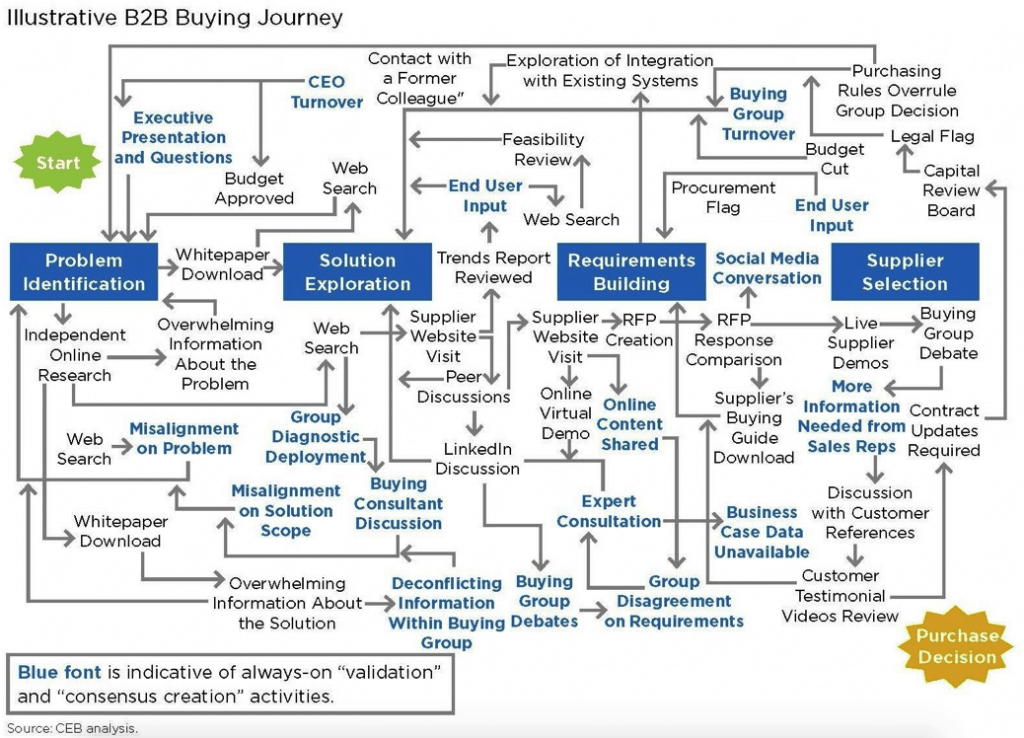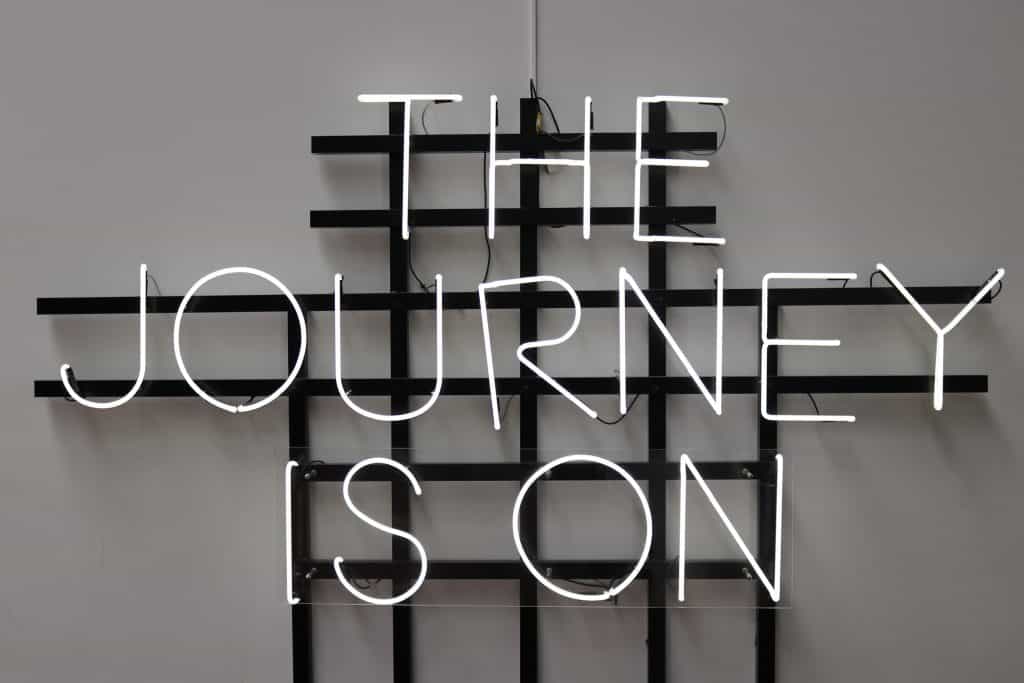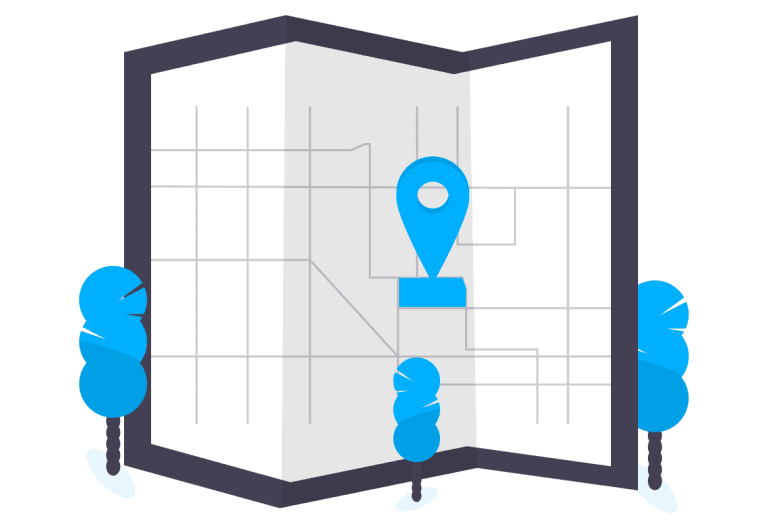Rising competition and customer expectations increase the need for improving customer experience (CX). To acquire new clients, maintain the relationship with them and, as a result, increase revenue, companies have to upgrade the whole customer journey. Do not wait any longer – keep on reading to find out what the buzz is about.
What is the customer journey?
First, let us establish what does actually means. Survey Monkey defines the customer journey as the complete sum of experiences that customers go through when interacting with your company and brand. Instead of looking at just a part of a transaction or experience, the customer journey documents the full experience of being a customer.
As the customer journey gathers all of the touchpoints, it is not only a marketing department concern. To deliver the best experience and satisfy customers you need to cooperate across all teams. For example, marketers can get inspired by the customer service team to create valuable and useful content for a company’s blog.
To visualize and better understand this process, companies use a customer journey map. Such visualization represents all of the touchpoints – full customer relationship over time and across all channels.
We tend to think that the customer journey is linear and so the traditional customer lifecycle usually includes the following steps:
- awareness
- consideration
- evaluation
- purchase
- onboarding
- retention and loyalty
- advocacy.
Conceptualization of this process helps us understand the customer journey, but is it not relevant to reality. Below, you can see the example of “customer maze” that represents how consumers actively search for solutions and try to validate gained information.

Of course, the customer journey differs depending on the company specifics, industry characteristics, and preferences of the customers in a given sector. That is why you should create the customer journey map designed especially for your brand. You can use a graphic tool, like Canvanizer (free), to help you craft your company’s customer journey map.
Why is the customer journey crucial for business?
Although this term became quite a buzzword currently, and 75% of companies claim they represent a customer-centric approach, only 30% of customers agree (according to Capgemini).
Moreover, if you think it is all about the price of your products or services, you could not be more wrong. In fact, 8 in 10 consumers are willing to pay more for better customer experience.
On the other hand, especially for the B2B sector, tracking progress in the customer journey can help activate sales. Features such as a customer portal can visibly help provide the best customer impression.
Another reason why it is worth taking care of customer experience at every stage of the customer journey is that happy consumers more willingly share their insights with others. Post-purchasing actions can result in recommendations and positive testimonials.
The faster you realize it is essential for your return of investment – the better.

How to improve the customer journey in 5 steps
Enough of the theory. Let’s get to the practical tips!
Gather feedback
No matter how hard you try, you will not fully understand the customer’s needs and perceptions. Instead of imagining how he can see your brand, just ask them for an opinion. You can create a brief survey and offer customers a discount as a reward for sharing their views. Ideally, if you can talk about the experience with a few customers. Walkthrough the whole journey with them and discuss the issues. Product management tools can be of great help here. Tools such as Canny can help you gather customer feedback quickly and easily.
Do not forget to find out what are your advantages.
Eliminate the pain points
First, focus on these elements of the customer journey that can be troubling. Immediately improve touchpoints that are seen as unfavorable because that is what customers will remember. If they can not be removed right away, try to modify them to make this part of the journey at least a little bit more tolerable.
Focus on the emotions
Even business decisions are partly based on an emotional impression. Speak the language of benefits to highlight the benefits that your products or services will bring.

Take an individual approach
Keep in mind that your target group includes individuals. While designing an outstanding customer journey leave a room for personalization. That way you can adjust actions to individual preferences.
Surprisingly automation can help you with that! Thanks to new technologies, you can gather customers’ data and use it for better understanding and personalizing communication (for example, via email marketing). Retargeting can be a great example of such an approach. You can reach customers interested in your offer, based on their previous actions. Find out more about retargeting!
Remove unnecessary steps
Shorten the customer journey as much as possible. Make the purchase easier for your clients and decrease their effort. Leave only the crucial steps.
La grande finale
Do not underestimate the power of the last stage of the customer journey. End with a WOW effect so that your clients will happily share their experiences and impression with their friends, work colleagues or network.
Conclusion
Digital Transformation enables access to information, and therefore, a wide range of offers. It can be a blessing, but also a challenge for your company. Today, you can easily reach your audience, but your competitors have the same opportunity. Customers are more aware of their options and are engaged in searching for the best solutions. To respond to their needs and improve customer experience, revamp your strategy considering the customer journey. Keep in mind that the journey does not have to be linear, but it more looks like a maze – customers go in and out while choosing products and services.
customer advocacycustomer carecustomer journeycustomer personalizationcustomer segmentationcustomersuser experience
